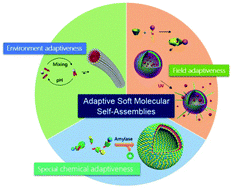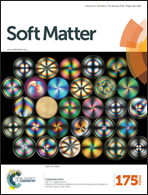Adaptive soft molecular self-assemblies
Abstract
Adaptive molecular self-assemblies provide possibility of constructing smart and functional materials in a non-covalent bottom-up manner. Exploiting the intrinsic properties of responsiveness of non-covalent interactions, a great number of fancy self-assemblies have been achieved. In this review, we try to highlight the recent advances in this field. The following contents are focused: (1) environmental adaptiveness, including smart self-assemblies adaptive to pH, temperature, pressure, and moisture; (2) special chemical adaptiveness, including nanostructures adaptive to important chemicals, such as enzymes, CO2, metal ions, redox agents, explosives, biomolecules; (3) field adaptiveness, including self-assembled materials that are capable of adapting to external fields such as magnetic field, electric field, light irradiation, and shear forces.


 Please wait while we load your content...
Please wait while we load your content...